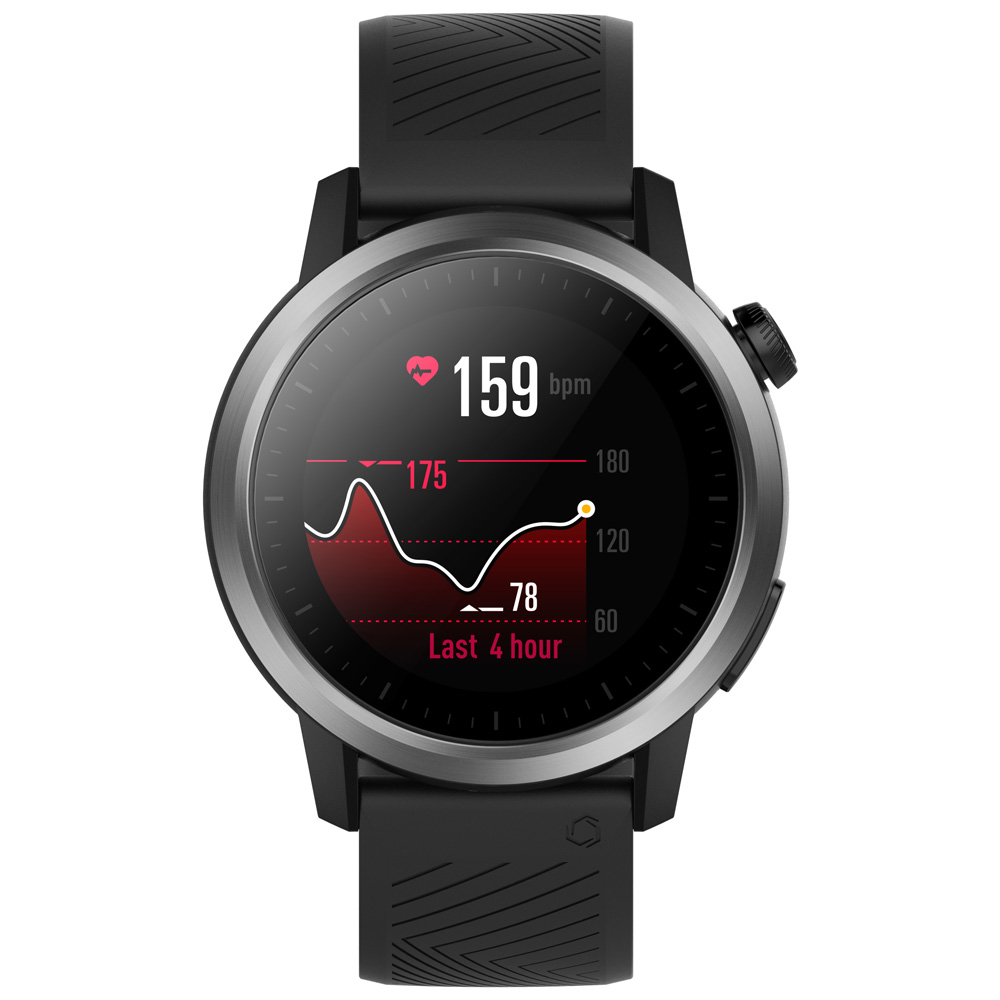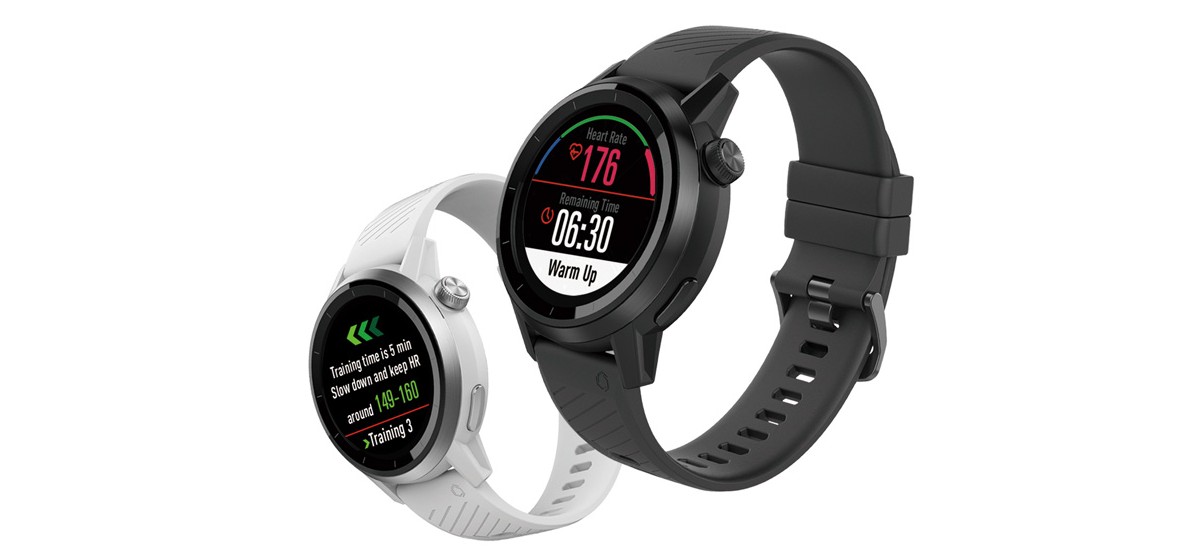Our Verdict
Like all Coros watches, the Apex offers good value and great battery life, and it’s one of the best options available for runners and triathletes under £300.
For
- Great battery life
- Breadcrumb navigation
- Accurate multisport tracking
- Training analysis
Against
- No music storage
- Basic sleep tracking
You can trust Coach
Three features make the Coros Apex stand out. It looks good; the battery lasts for 35 hours of GPS tracking; and it costs less than £300. Although it suffered some heart rate accuracy problems during our testing and it lacks a couple of features common among other watches, the Apex is an impressive fitness tracker that runners and triathletes in particular should consider.
If you’re a triathlete then the Apex is the best available for under £300, but runners are better served by the Garmin Forerunner 245 Music (£299.99), which lacks a multisport mode but has space for music and offers better all-round sports tracking, even if its battery life isn’t as good as on the Apex.
Garmin has also recently reduced the RRP of the Garmin Forerunner 935 multisport watch to £389.99 – still a fair bit more than the Apex, but it’s a far better sports tracker. The Garmin 735XT is also usually available for well under £300 and although it’s getting on a bit now, it’s still an excellent multisport watch.
Coros regularly updates the Apex with new features, so you can expect some gaps to be filled in the next few months including more sports modes and structured workouts, but relying on updates arriving is not ideal when you’re spending £250 to £300. The safe bet is one of the Garmins (it always is) but the Coros watch’s ease of use, massive battery and smart looks make it a worthy option.
Running With The Coros Apex
Right off the bat let’s give Coros plaudits for allowing up to six stats on each of the five screens you can swipe between when you’re running. Sure, most people probably don’t need that many, but it’s nice to have the option. You have to set up your in-run data screens in the partner app rather than on the Apex itself, which is a small annoyance, but most of us will only need to do this once.
Alongside all the standard stats like time, distance and pace, Coros offers a few more advanced stats, the most interesting of which is stamina. This provides a live take on how much energy you have left while running, with a percentage that drops as you run. Helpfully this stamina reading is also available when not exercising, so you can check on how quickly your stores are being replenished between runs.
Most GPS watches now have some kind of recovery tracking feature and other companies like Polar go into far more depth than Coros on this front, but there’s a compelling simplicity to the stamina measurement. If you’re on a run and wondering if you should push on for one more kilometre, you can check your stamina reading to see whether it will completely empty your reserves. But it’s probably more useful before you even step out of the door. When you’re deciding between an easy run or an interval session, a quick look at your stamina might be a handy way to tell if you’ve got the juice for a tough workout.
Of course that’s only if you believe that the stamina measurement is an accurate take on your energy. Unfortunately we found that the Coros Apex wasn’t particularly accurate in tracking our heart rate during runs, which threw the stamina reading out of whack.
For most runs the Apex would track accurately enough (compared with a chest strap reading) at first, but after ten or 15 minutes the reading would start to climb and settle at around 160 or 170bpm, well into my red zone and far higher than the reading on the chest strap. At other times the reading would just be consistently 20-25bpm too high throughout a run. On occasion it would be spot-on for the entire run, but these occasions became fewer and farther between throughout the test period.
This also affects the aerobic and anaerobic training effect given for each workout, because the watch thinks you’re working in a higher heart zone than you are. Broadly speaking, most of your training should be aerobic running in the lower three heart rate zones to build your fitness and general stamina, while more intense anaerobic efforts in the zones four and five can help build you speed endurance.
The Coros Apex is big on aerobic and anaerobic training, offering guided workouts based on these two areas as well as a live reading of aerobic and anaerobic training effect. If you pair a chest strap with the watch (ANT+ only, Bluetooth straps are not supported), this could be a compelling way to make sure you get the desired effect from your session, although a better explainer of aerobic and anaerobic running in the app to get people using the guided workouts would be helpful.
If you want to set up your own simple workout there is an intervals function within the running mode, but you can’t get any more complex than basic on/off repeats. Coros has told us structured workouts will come to the watch in a future update, though there’s no confirmed date for this.
One update that has arrived on the watch since its launch, however, is breadcrumb navigation. It’s easy to get a route on to the Apex – either create one from a past workout or open a .GPX file in the app. You can get a .GPX file using pretty much any online route creator and make them from Strava routes. Once it’s in the app and synced to the watch, you get a basic pointer plus trail to follow when running. And if you get lost during a run you can also turn on the back-to-start pointer to guide you home.
The battery life on the Apex 46mm really is fantastic. American ultrarunner Camille Herron recently used it while breaking the 24-hour distance record and still had 32% of juice left afterwards. We found that we’d get through about half the battery in a busy week of running every day combined with the odd cycle commute. If you’re training three or four times a week you could comfortably get through three weeks without having to charge it.
Cycling With The Coros Apex
The main change from running to cycling with the Apex is what data fields are on offer. You lose stamina and training effect (a shame because stamina especially would be useful on long rides), but gain several different power options (you’ll need to connect a separate sensor to the watch for this), as well as a real-time estimation of the grade of hill you’re on.
Cyclists heading for a long ride will probably be even more delighted by the battery life on the Apex than runners, and may not suffer the same problems with heart rate tracking. Although I ran more than I rode with it, and generally stayed at a lower intensity when cycling, the Apex proved more accurate in the saddle. All the same, I’d still suggest you’d need to link it to an external heart rate monitor if you wanted accurate heart rate tracking for cycling sessions.

Sports Tracking With The Coros Apex
When it first launched the Apex only tracked running, cycling and swimming, or a combination of those sports, but Coros has now added more sports modes to the watch. These include hiking, a dedicated trail run mode, plus indoor and outdoor general cardio modes. This still falls well short of what you’ll get on Garmin, Polar or Suunto watches, but it will probably suffice for runners and triathletes who just want to keep a general log of their cross-training, especially as you can re-label the cardio modes more precisely once they’re synced over to Strava. The outdoor cardio modes uses GPS and will record distance and speed, while the indoor mode mainly just records time elapsed, heart rate and calories burned.
Activity Tracking With The Coros Apex
The Apex tracks your everyday activity, giving steps, active energy (calories burned while active), exercise time and floors climbed. This information is available by scrolling up or down from your main watch face, which can also display some of your daily activity stats depending on which of the five watch faces available you choose.
Everyday tracking isn’t really the focus of the Apex, so the above will more than cover what most would expect from it, although an alert to move if inactive for long periods would be useful. The heart rate tracking when not exercising is also not continuous, with the Apex taking a reading every ten minutes.
Sleep Tracking On The Coros Apex
You’ll see no sleep tracking section most of the time in the Coros app, which is because your data only pops up when you have actually worn the Apex at night. The next morning you’ll get a graph plotting your heart rate against a background colour-coded to show the time spent in deep sleep, light sleep or awake. You’re also given the total time spent in each, along with an average heart rate. There are no recommendations for getting better sleep and the Apex won’t identify any trends in your sleep, which some other devices are able to do, but it’s a solid offering and the Apex is comfortable enough to wear at night.
The Coros App
Just as the device itself doesn’t go overboard with stats and menus, things are kept pretty simple in the app as well. On the home screen there are graphs of your daily activity like steps and active energy plotted over time, along with info on your training load and general fitness stats like VO2 max and resting heart rate.
This section also includes an estimate of your threshold running pace, which is roughly the pace you could sustain for 50-60 minutes. Any watch’s rating of your VO2 max and threshold pace should be taken with a pinch of salt, and trends in those stats are far more useful than the raw numbers themselves. However, the Coros stats seemed to jump around more than I’ve experienced on other trackers, and the threshold pace and VO2 max ratings were wildly optimistic for me. The former was given as 2min 48sec per kilometre, which is a pace I could maintain for under five minutes, rather than 50-60. So while it’s interesting to see how the Coros rates you and worth keeping an eye on any changes to your stats, I wouldn’t go bragging about them to too many people if I were you.
The app also has a tab for your workout history, with all the usual info on your runs, rides and swims, and a tab dedicated to your watch, where you can update it and set up your data screens. You can also add watch faces to the watch from here – five are allowed on the Apex itself in total, so you can swap in other picks for the default quintet if desired.
Battery Life
As you’ve no doubt gathered from the above, not very often. With regular use, tracking some kind of outdoor activity every day, you’ll get through two weeks without a charge, and if your training is less frequent you’ll fly past the three-week mark. The Apex 46mm uses its larger frame to pack a slightly better battery life than the Apex 42mm, but the latter will still last for 25 hours of GPS use compared with the 46mm’s 35 hours.
Design
The Apex has a simple, smart design that makes it suitable for wearing everywhere. It looks and feels like a premium device, and the silicone band is comfortable to wear all the time. You can choose between a silver or a black bezel on the watch, and there are seven colour bands available if you want to replace the default black. It would be nice to have the option of different materials in the bands, with leather or metal options for when you’re not exercising, but that’s hardly essential.

Nick Harris-Fry is a journalist who has been covering health and fitness since 2015. Nick is an avid runner, covering 70-110km a week, which gives him ample opportunity to test a wide range of running shoes and running gear. He is also the chief tester for fitness trackers and running watches, treadmills and exercise bikes, and workout headphones.


